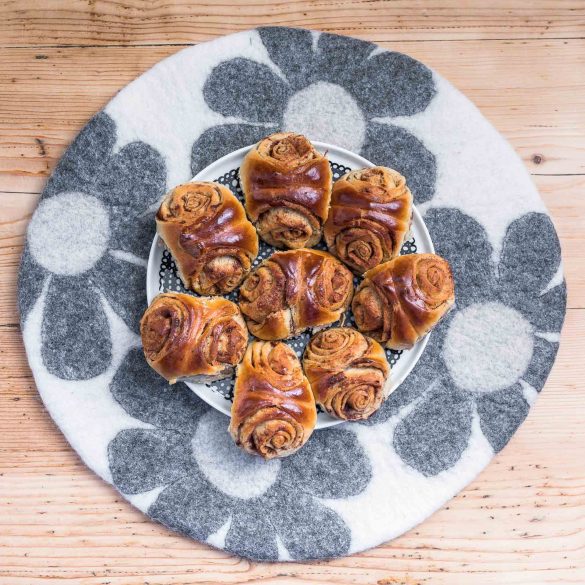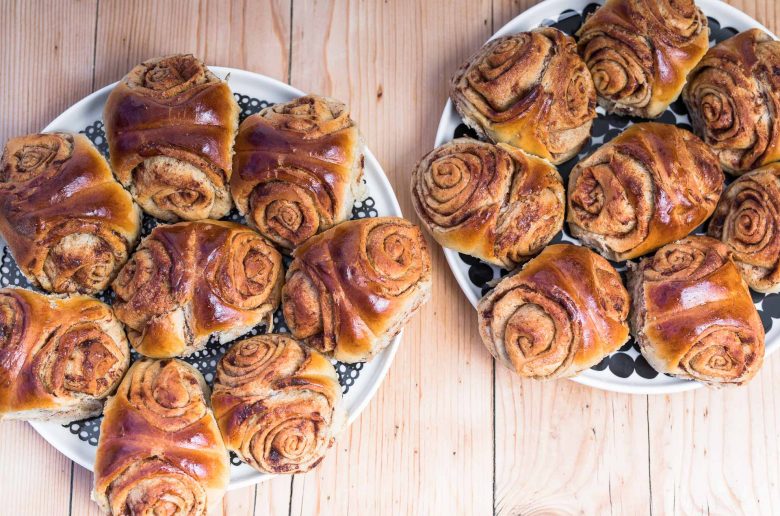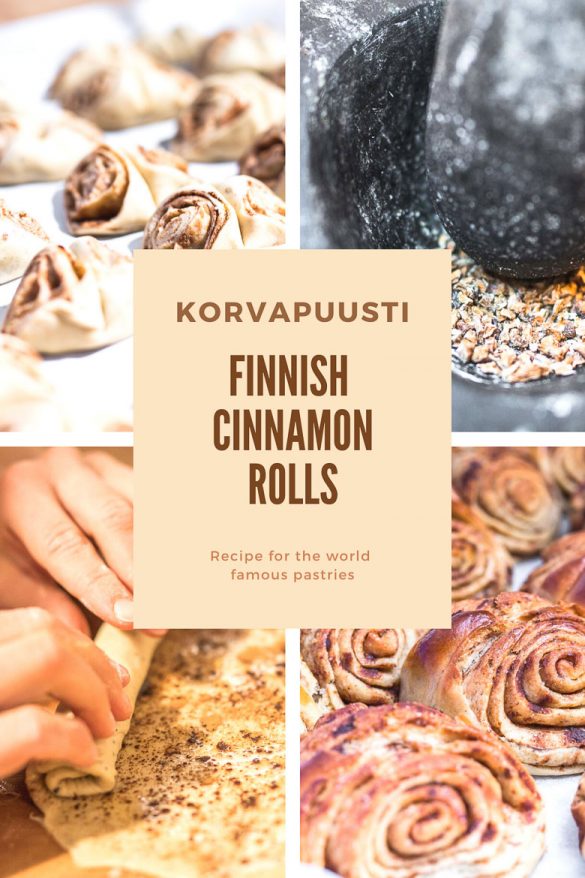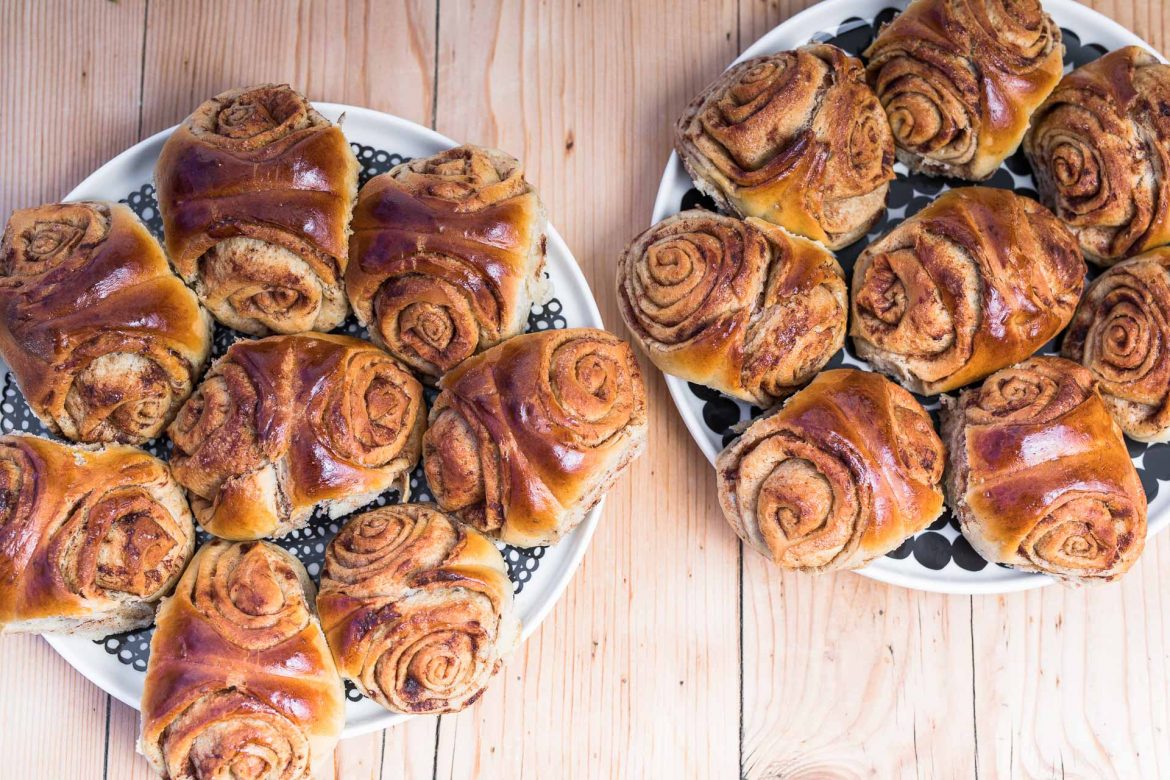The traditional and famous Finnish cinnamon pastries called Korvapuusti (literally: slap/cuff on the ear) are the perfect treat for young and old alike. When temperatures drop in autumn it’s the time of the year when the Nordic streets are filled with the sweet smell of cardamom and cinnamon. Go and enjoy a Pullakahvit – the Finnish word for a coffee being enjoyed with a cinnamon pastry!
Facts
In fact you’ll get them at almost every café all year round and Cinnamon buns in general are an integral part of the cultural Nordic identity and kitchen. The high season is never the less the long Nordic winter. Cinnamon pastries are so popular in fact that they even have an own holiday in Sweden and Finland – the “Cinnamon roll day” (swe.: Kanelbullens dag) on October 4th each year. Korvapuusti are very similar to their Swedish counterparts the Kanelbullar but with the essential difference of their unique shape. The technique of cutting and pressing leads to a bigger surface giving them the bit of extra crispiness.
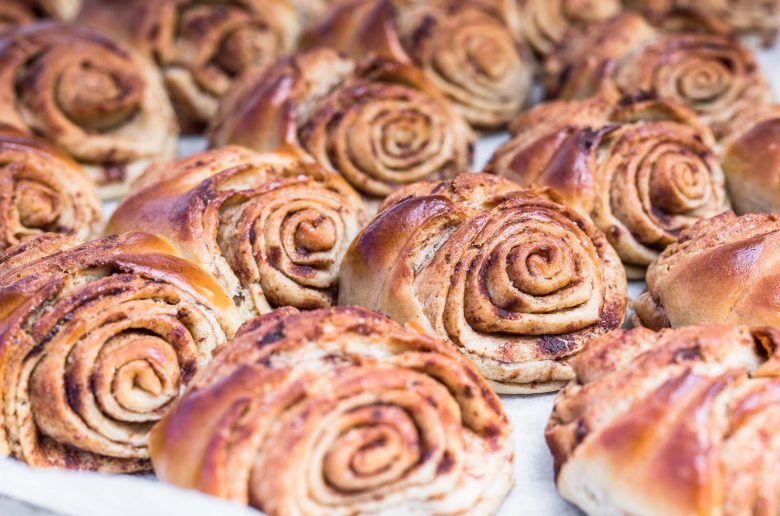
Origin
It’s not totally clear where the slightly violent name derives from. However, one common explanation is the resemblance to a pair of ears in combination with the way of preparation – a tiny slap in the middle to finish the shape. Pastries like this arrived in the Finnish upper class in the 18th century from Germany. It was not till the 1950s though that Korvapuusti became really popular when the access to essential ingredients was available to most households.
Culture
Nowadays they are considered an essential part of the cultural Finnish heritage. They are so popular that you’ll even find a Korvapuusti recipe on most flour bags in the supermarket – native language only of course. Shapes can vary and some make even “Korvapuusti-cakes” but the “slapped ear” version is still the most popular one.
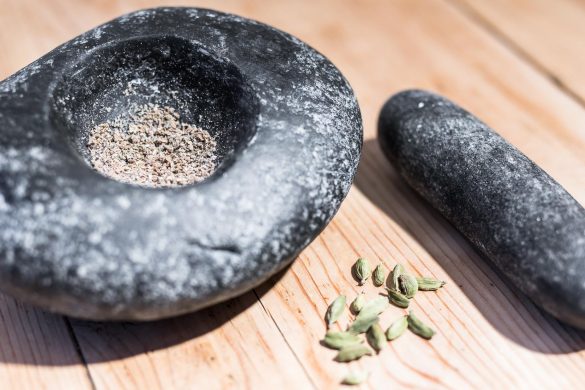
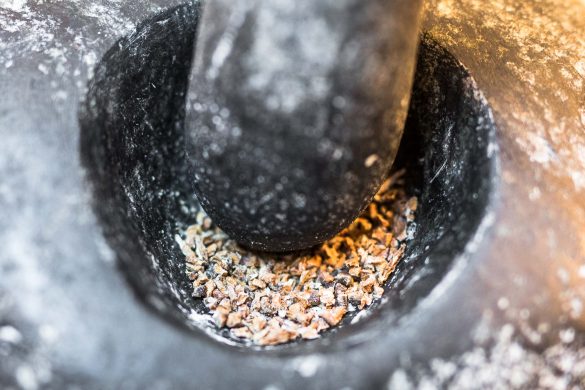
You should enjoy them as long as they are still warm along with the drink of your choice. The pearl sugar on top is usually obligatory but we feel that it can be left out if you are not a fan of this extra overdose or for children.
The dough itself is simple yeast dough refined with hand-crushed cardamom. Some Finns say, that the real secret lies in adding enough sugar, butter and love into the making to get the best results. At the end of the day there are a lot of different ways to make Korvapuusti and every Finnish household adds some of their own little secrete. We have tried many variations and the following recipe is our personal favourite version.
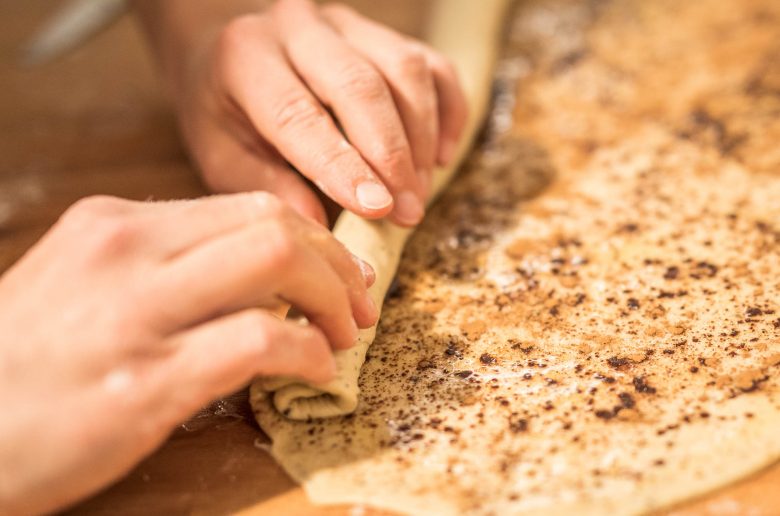

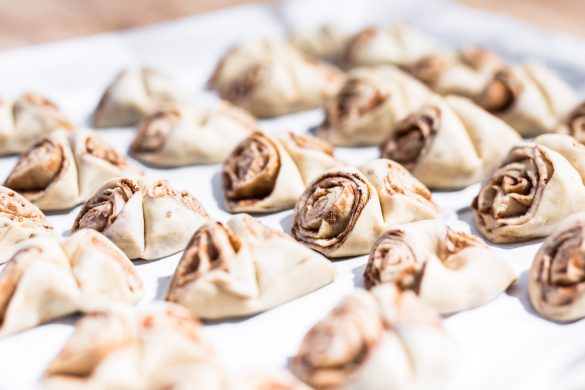
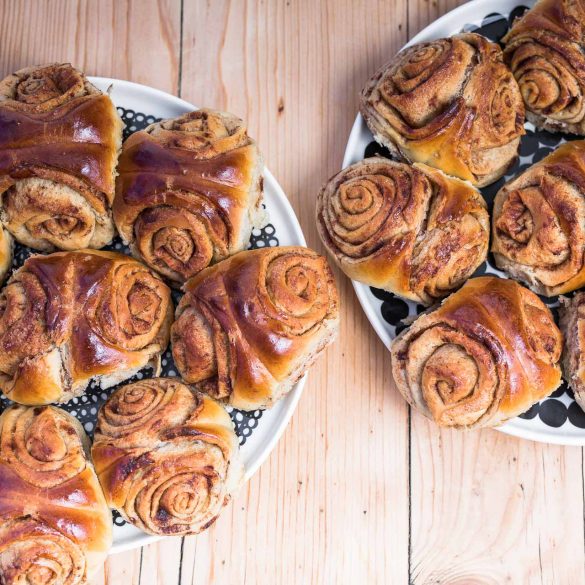
Korvapuusti | Traditional Finnish Cinnamon Rolls
Ingredients
Dough
- 220ml (1 cup) lukewarm milk
- 500 grams (4-5 cups)
- finely ground flour (all purpose flour will do too)
- 75 grams of butter (room temperature)
- 1 cube yeast (alternatively you can use 1 pk dry yeast)
- 70 grams (brown) sugar
- 1 teaspoon salt
- 1 tablespoons freshly ground cardamom (more/less if you like)
- 1 egg (+ 1 egg for glaze)
- (pearl sugar / in our opinion not necessary)
Filling
- 1/4 cup butter (melted)
- 50 grams (brown) sugar
- 1,5 tablespoons cinnamon
Instructions
The recipe is fairly easy and the dough is a simple yeast dough like for any other pasteries. If you have no experiences with yeast dough follow these steps.
Step 1
Warm the milk lukewarm – very careful that it does not get (~40° C is great) or you'll destroy the yeast! Take a large bowl and combine the milk with the yeast (dissolve it completely) and a teaspoon of sugar. Set aside for around 10 minutes and then add the rest of the sugar, the cardamom, the salt and 1 egg and mix the ingredients. Gradually add two thirds of the flour and knead until everything is combined, then add the butter and continue kneading. Slowly add the remaining flower until the dough does not stick to your hands and the bowl.
Step 2
If the dough is ready form a ball and place it in the bowl. Cover it with a kitchen towel and place it in a warm and calm environment. to let it rise. We put it in the (not heated!) oven but usually any place will do as long as it is not cold and windy. The dough takes around 1 to 1 1/2 hours to grow – in any way you can use it when it has doubled in size. Don't be impatient with this!
Step 3
While the dough is growing mix together the ingredients for the filling. Melt the butter and add sugar and cinnamon – then set aside. (Alternatively you can only melt the butter and sprinkle the cinnamon and sugar directly on the rolled out dough.)
Step 4
If your dough is ready put it on your working surface (put some flour underneath!) and role it flat out. Depending on the size of your surface and the amount of dough you have, you can divide it into two. Roll out the dough with a rolling pin (a bottle will do just fine as well). Make a rectangular shape in the ratio 2:3 (e.g. 40 x 60cm). This is a crucial part of the process. Rolling out the dough very thin equals a bigger surface, which means that you can distribute more of the cinnamon/sugar filling. Personally we are big fans of very fin layers but you have to experiment a bit what suits you best.
Step 5
Spread the filling evenly on the surface with a table knife. Then start coiling up the dough on one of the longer sides and make a tube. Cut the tube in regular trapeze sized pieces (5 cm ) in app. 30° angle (see images). After cutting, place each piece on a baking paper and turn each piece so that the short side faces up. Then press your finger or a knife handle on each tip to finalize the characteristic ear-shaped form.
Step 6
Cover the pieces again with a kitchen towel and let them rest for another 30 minutes. Meanwhile preheat the oven to 220° C (430 F) and whisk the remaining egg. After the resting time brush on the egg. This is also the time when you can add the pearl sugar.
Step 7
Bake them for around 20 minutes or until they are golden brown. Baking time depends a lot on the size of your Korvapusti and on your oven. Start checking frequently after 15 minutes.
Step 8
Eat them as long as they are still slightly warm. Enjoy them with your loved ones. And let us know how you liked the recipe.
Notes
Make sure the ingrediants are at room temperature. Be careful with heating milk and butter to not destroy the yeast (it will be ruined if it gets to hot). We personaly do not like pearl sugar – however for the perfect optical result and the ultimative sweetnes feel free to add it in quantities. You can switch normal milk with almond- or soya milk but for the authentic fluffy taste we recommend normal milk.
